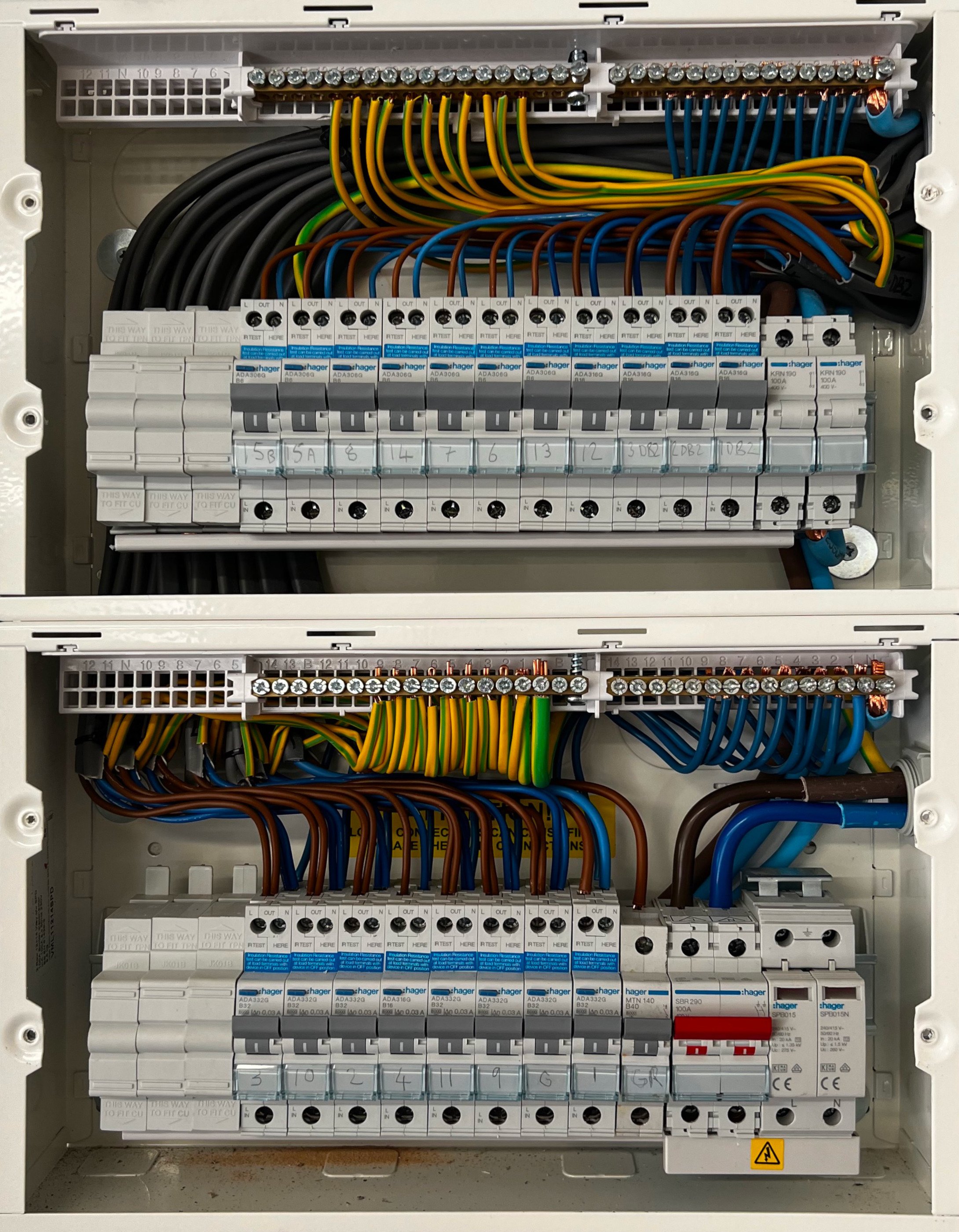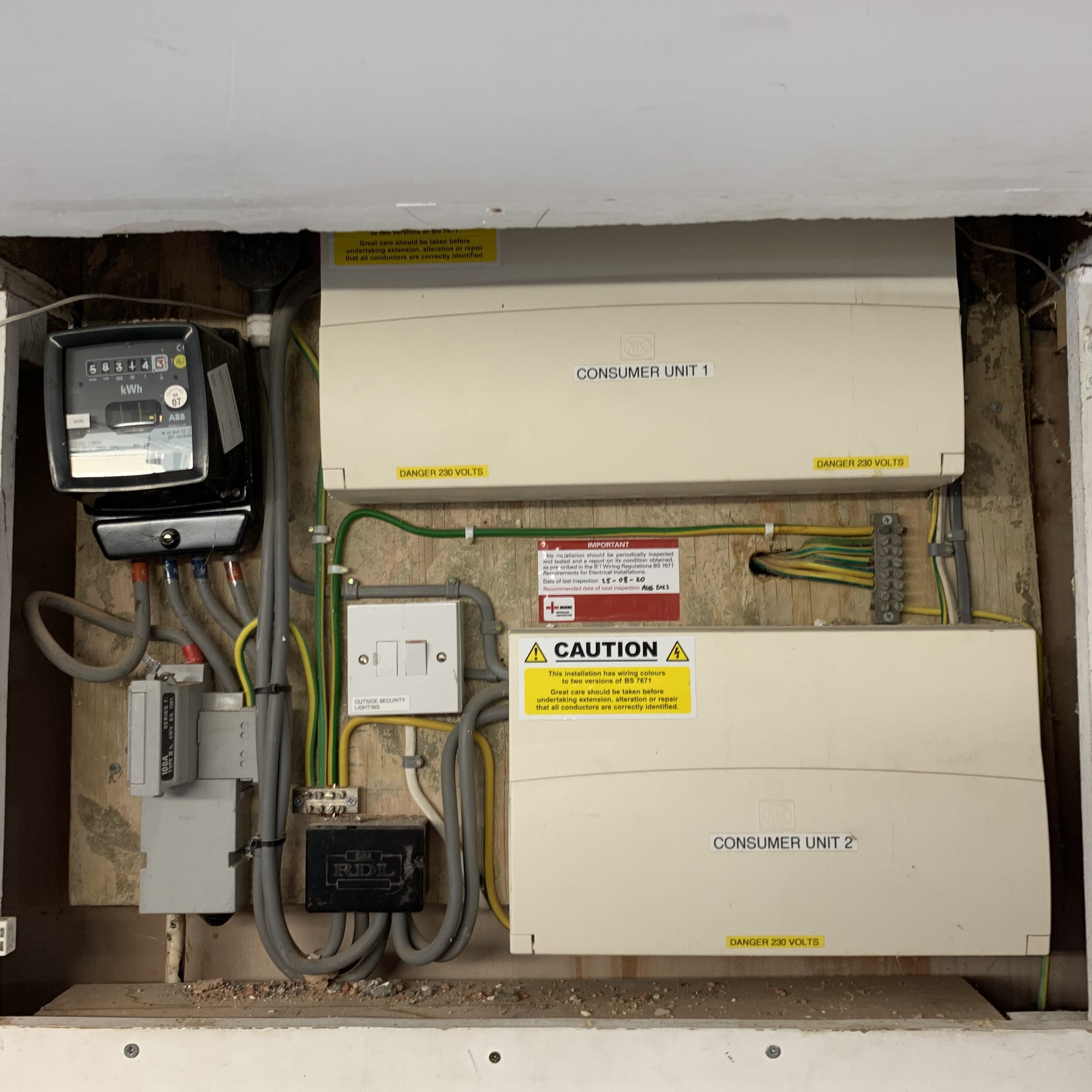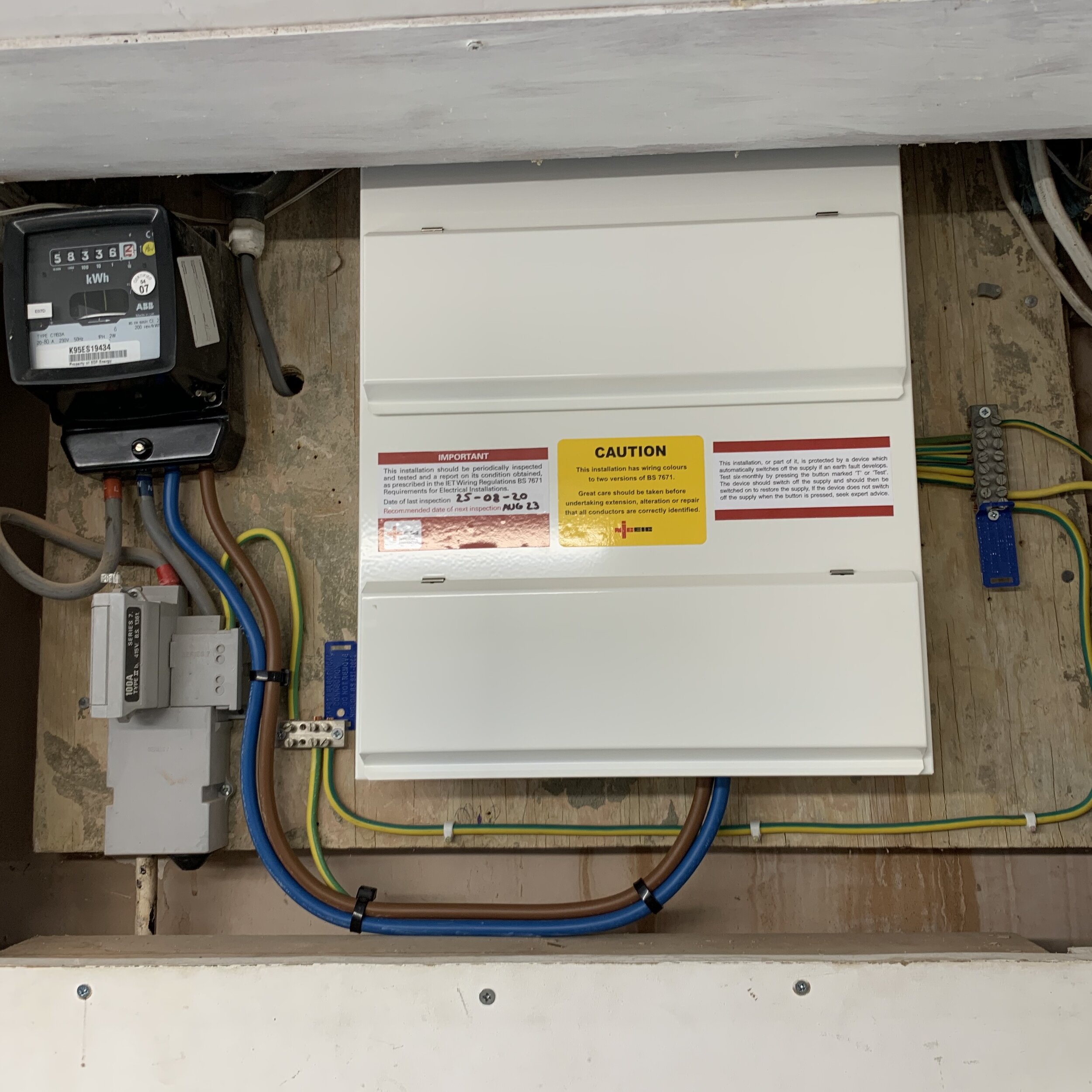
Why WOULD I Need To Upgrade?
As with most material things they deteriorate with age and also with updates in safety standards and new technology is implemented to improve on electrical safety. Another reason you may need to upgrade your fuse box is because of planned expansion works that will need to meet the current requirements of the current wiring regulations BS7671
Now more commonly known as a consumer unit, fuse box’s should be relatively easy to find and accessible in your home as this is where electricity is distributed to all the final circuits within your property or premises. If you don’t know where your consumer unit is located then you should make it a priority to do so just in case you ever need to switch the electricity off in an emergency.
A consumer can be made up of all or some these fundamental parts:
Surge Protective Device (SPD) - This device protects a consumers installation and equipment attatched from a surge such as a direct lightning strike to the electrical distribution network system that delivers the electrical supply to a premises. However this device does not protect an installation and equipment attached from a direct lightning strike to a premises structure.
Main Switch – this allows you to turn off the electricity supply within your home. You might have more than one mains switch, for example if your home has electric storage heaters. In this case you may have a separate fusebox.
Residual Current Devices (RCD/RCBO) - These are switches that trip multiple circuits an individual circuit under fault conditions, and instantly disconnect the electricity. See below for more on RCDs.
Circuit Breakers – These are automatic protection devices in the fusebox that switch off a circuit if they detect a fault. They are similar in size to fuses, but give more precise protection. When they ‘trip’, you can simply reset the switch. But make sure you correct the fault first.
Arc Fault Detection Devices (AFDD) - AFDDs are protective devices installed in consumer units to protect from arc faults. They use microprocessor technology to analyse the electricity’s waveform to detect any unusual signatures that signify an arc on the circuit. Cutting off power to the affected circuit could prevent a fire. They are far more sensitive to arcs than conventional circuit protective devices.
Fuses (may be found in place of circuit breakers in older fuse boxes) – Rewireable fuses have a piece of special fuse wire running between two screws. When a fault or overload current flows through the fuse wire, it will become hot and melt. The melted fuse breaks the circuit, disconnecting the faulty circuit and keeping you safe.
If your fusebox has a wooden back, cast iron switches, or a mixture of fuses it is likely that it dates back to before the 1960s and will need to be replaced.
What does an RCD do?
An RCD is a sensitive safety device that switches off electricity automatically if there is a fault.
An RCD is designed to protect against the risks of electrocution and fire caused by earth faults and can help protect you from electric shock in potentially dangerous areas like bathrooms and gardens. For example, if you cut through the cable when mowing the lawn and accidentally touched the exposed live wires or a faulty appliance causes electric current to flow to earth.
How does it work?
An RCD constantly monitors the electric current flowing through one or more circuits it is used to protect. If it detects electricity flowing down an unintended path, such as through a person who has touched a live part, the RCD will switch the circuit off very quickly, significantly reducing the risk of death or serious injury.
Is an RCD reliable?
The electrical industry has found that fixed RCDs (within a consumer unit) are about 97% reliable. This improves if they are tested regularly. If you have fixed RCD protection, it will reduce the risk of a serious electric shock to you and your family. It can also protect your home against the risk of fire caused by faulty wiring or appliances.
Remember – Although RCD protection reduces the risk of death or injury from electric shock it does not reduce the need to be careful. Have your wiring checked at least once every 10 years to ensure the safety of you, your family and your home. If you find a fault with your wiring, or an appliance, stop using it immediately and contact us.
Don’t forget to test – You should test all fixed and socket RCDs about every six months by pressing the test button on the device. Manufacturers recommend that portable RCDs are tested every time you use them.
Beware – If you hold the test button in for a long time and the RCD does not switch off the electricity supply, then get advice from a registered electrician.
The UK standard for safety – Since July 2008 virtually all circuits in new or rewired homes have been required to include an RCD under the latest edition of BS 7671.
How do I check whether I already have fixed RCD protection?
To check if you have fixed RCD protection, go to your consumer unit and have a look to see if there is a device with a push button marked ‘T’ or ‘Test’. This ‘test’ button is part of an RCD. If an RCD is fitted, there should also be a label on or near the consumer unit stating ‘test quarterly’ or ‘test six-monthly if installed after July 2018.

